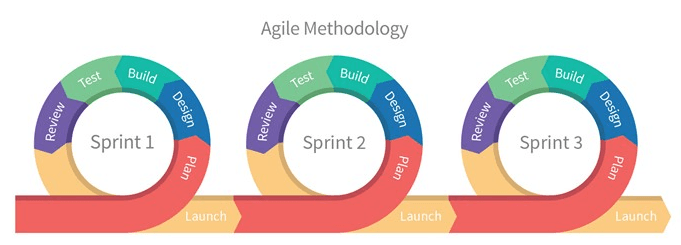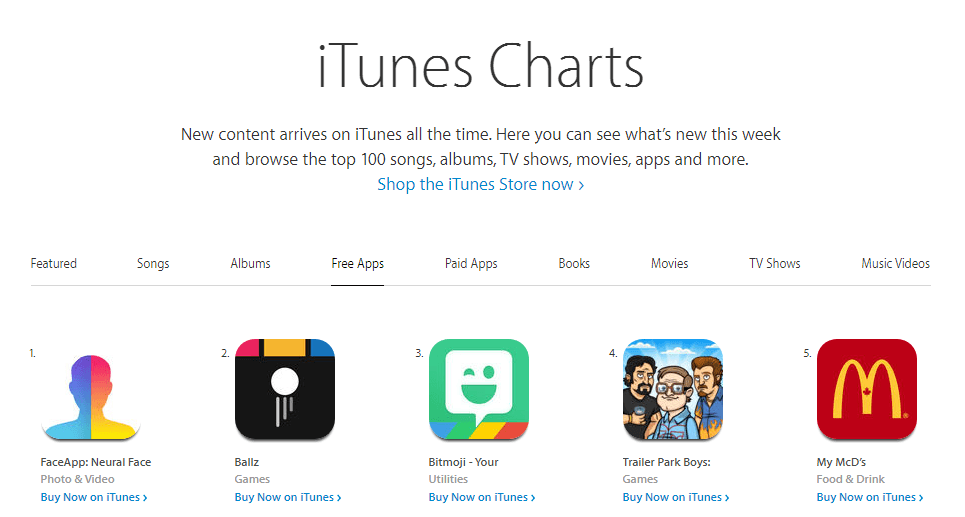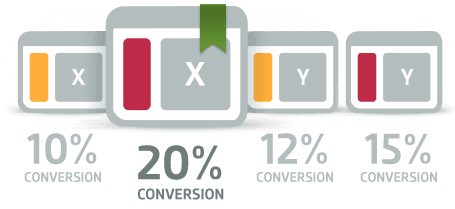10 Skills Every Mobile Product Manager Needs
It's important to identify the skills that fit closely with your day-to-day tasks and implement them as soon as possible.
Like general product management, the role of mobile product managers emerged out of a need to serve the changing face of tech. It’s a specialized role that requires specialized skills and product management best practices that cater to mobile products.
The relationship between manager and product is a tight one. As a mobile product manager, you have to stay abreast of the market and make adjustments quickly. With new apps and platforms, the face of tech is changing quickly.
Here we look at the skills every successful product manager needs in order to conquer the changing landscape.
1. Editorial mindset
A product is no different from a well-constructed story. As Andrew Chen, Head of Rider Growth at Uber points out, products need “consistency and cohesion.” As a mobile product manager, you have to approach product development with an editor’s mindset. Of all the new ideas you have access to, you have to choose which ones to incorporate and which ones to pass on to ensure your product doesn’t feel disjointed and scattered.
To figure out which new features or processes to include, look at your product as a whole to judge how this new piece fits into the story your product is telling. Does it flow and enhance the product or does it seem foreign and lack cohesion? For instance, if you have a weight loss app it makes more sense to add a calorie counter versus a sleep tracker.
Editing allows you to stay true to your core product by only adding features and processes that add value.
2. Agile development
As a mobile product manager, you manage your product from concept to launch. Part of this management is owning the product roadmap. It’s through this ownership that you see the big picture and manage iterations of your product.
To be successful, adopt a flexible roadmap using agile product management methodology. A rigid one with inflexible timelines and updates makes it difficult to adjust to market conditions or user needs as they come up. If you have a time management tool and see that users prefer flexibility in how they set up their workflows, you have to make adjustments quickly and roll out and communicate the new feature.
[Source]

Product roadmaps are important but allowing flexibility puts you in a better position to cater to the needs of your users and keep up with trends.
3. Understanding app release trajectories
It’s taken months to build your app but now that it’s ready to launch, the last thing you want is for that to fall flat. This is where the “mobile” in mobile product manager comes into play. You need to have a thorough launch plan, and if you have an app, you also need in-depth knowledge of the platforms you’ll be using.
Let’s say you want to put your app in the App Store, chances are that it’ll experience tons of popularity in its first few weeks if it’s featured on their iTunes chart. If early adopters have trouble using your app at this point, the exposure hurts your product. You’ve lost these users.
[Source]

Instead, focus on launching the most important features first and then roll out new updates in subsequent releases. Put in place a schedule for regular releases so that your product is constantly evolving. This organized approach allows you to be proactive with your product because you don’t have to wait indefinitely to make a fix.
4. Empathy
As a mobile product manager, you’re the voice of your users. When you discuss product strategy and new features, you act as their advocate. Because of how well you know them, it falls to you to explain how proposed changes will affect them. It’s for this reason that you need to practice empathy.
Suppose the sales team wants to run re-occurring demo days because it’ll engage users and increase lead generation, you have to figure out the motivation behind the request. While there’s nothing wrong with the request, if it’s a sudden change of direction perhaps there’s an underlying issue they’re trying to solve. Catherine Shyu, Product Manager at FullContact, explains that this ability to discern motivations helps you see through the answers you get.
You have to uncover the underlying issue by asking questions to understand their reasoning and come up with a solution that works for everyone.
5. UX/UI design acumen
Good product design reflects the needs of users. It shows that you know them so well that you offer them what they need as soon as they realize they need it.
To stay on top of user demands, you need a close working relationship with your UX and UI design teams. They’re responsible for turning your product vision into a tangible product users appreciate and gravitate to. To nurture this relationship, Melissa Perri, a Product Strategy, UX Design, and Process consultant, suggests focusing on the skills each team brings to the table. The product team does market research and zeros in on the ideal target audience while the UX and UI teams focus on creating interfaces that support user experience and engagement.
Sleek design is just as important as intuitive functionalities. The app below uses a simple design for its UI making it easy for users to find what they need quickly and easily.
[Source]

A close working relationship spreads the focus between tactical and experiential approaches. Both serve to win over customers.
6. A/B test to develop team ownership
Just because you’re the product lead doesn’t mean that all ideas should come from you. With different teams at your disposal, they’re likely to have insights that you don’t. The key is empowering them to share these ideas. A/B testing is one way to do that.
[Source]

Here’s how to use A/B testing to encourage sharing:
- Hold regular team brainstorming sessions where new ideas are presented
- Explore each idea and evaluate how each one adds to the product vision
- Choose ideas to A/B test within different user groups
- Based on the resulting data, implement the ideas that add the most value
This approach inspires team ownership because it gives individuals the motivation to share their ideas and see the impact they have on the product. It also serves to increase team collaboration because it shows that all ideas, no matter how big or small, will be explored.
7. Basic understanding of code
Strengthen your working relationship with engineers and developers by showing them you understand what they do. You don’t have to be fluent in languages like HTML/CSS, Python or SQL but you should know enough to understand the processes your tech team explains and provide alternate options as needed. If you have a messaging app and want to change how users upload content, you have to:
- Understand how the process works in the back-end and
- Determine whether changes will affect other processes
So if changing how content is uploaded affects how content appears in the app, you can talk through alternatives with engineers and developers to figure out what works best. Your collaboration is more productive because you see both the front and back end specs of your product and speak confidently.
8. Quantitative analysis
While having a team of data analysts on hand is great, there will be times when you’ll have to roll up your sleeves and work directly with the data. Instead of waiting days or weeks for user insights from data analysts, your understanding of quantitative analysis will get you the information you need quickly.
As the mobile product manager, you’re close to the issues that come up. You know what kinds of requirements you need to include in the data in order to get the information you need. For example, if you notice increased churn, use a product analytics tool to create behavioral cohorts to monitor what’s causing different groups of users to leave.

In this example, you can set parameters to look at a specific cohort and measure their activity over the last 30 days.
An added bonus to working directly with the data is you determine the assumptions and parameters you use to generate reports. With a data analyst you’ll receive a complete report but you might not be clear on how they compiled the data.
9. Understanding use cases
Use cases let you test multiple scenarios to make sure your app or SaaS product works the way it should. As a mobile product manager, you need to know how to test your product using this method especially since it’ll likely be available in mobile and web form. However, the process for testing use cases on each will differ slightly.
Here’s how they differ per app format:
Native apps: These are built to work on specific mobile platforms. An example is Instagram which is available on iOS and Android, but work slightly differently on each. Building native apps allows for flexible problem solving, since developers use SDKs specific to each platform. Use cases should test app functionalities on each platform.
Mobile apps: These are apps available across all types of platform: websites, mobile and tablets. Uses cases should test how the app is seen on different screen sizes and how process function within each one. For example, users have to press a button on mobile but have to click on a website. Testing become a little more complex and you have to make sure changes carry over properly to all platforms.
Hybrid apps: This is a combination of native and mobile apps. Hybrid apps run on multiple platforms but when a change is needed, code only has to be changed in one place, like in a tool like PhoneGap, and applied to all required platforms. Uses cases have to make sure that all types of changes are visible across all platforms and devices.
[Source]

Testing for each one allows for an enhanced user experience. It doesn’t matter what type of device or platform they use, the experience should be comparable between each one.
10. Machine learning
Machine learning has come a long way in recent years. From offering up product recommendations to users to targeted ads appearing in your Gmail account, it’s getting harder to find products that don’t use machine learning. An obvious perk is the boost to efficiency it offers
Part of your job is to be in tune with where this technology is going and think of new ways to apply it to your product. To find opportunities ask yourself the following questions:
- What processes or pathways do users interact with the most and how can I make them easier for users?
- How much value will machine learning add to my product?
- How are my competitors using machine learning and how can I do it better?
- Do I have enough data to make the most of machine learning? If not, what do I need to do to gather more data?
With machine learning you encourage users to come back because your product “knows” them well and upgrades their experience.
Making it work for you
As you can see these are mostly specialized skills that will help you in your role as a mobile product manager. It’s important to identify the skills that fit closely with your day-to-day tasks and implement them as soon as possible.
As tech continues to change, it becomes increasingly more vital for you to develop skills that go beyond general leadership and communication. While these skills are super important, your skills set should also match your role.

Alicia Shiu
Former Growth Product Manager, Amplitude
Alicia is a former Growth Product Manager at Amplitude, where she worked on projects and experiments spanning top of funnel, website optimization, and the new user experience. Prior to Amplitude, she worked on biomedical & neuroscience research (running very different experiments) at Stanford.
More from Alicia




